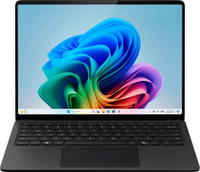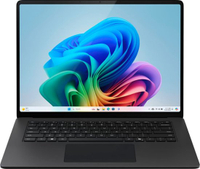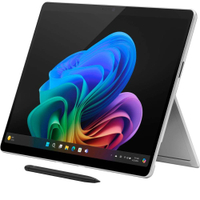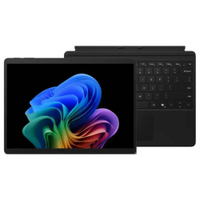The best Microsoft Surface deals in April 2025: Save up to $500
There's a lot of great Microsoft Surface deals up for grabs this spring
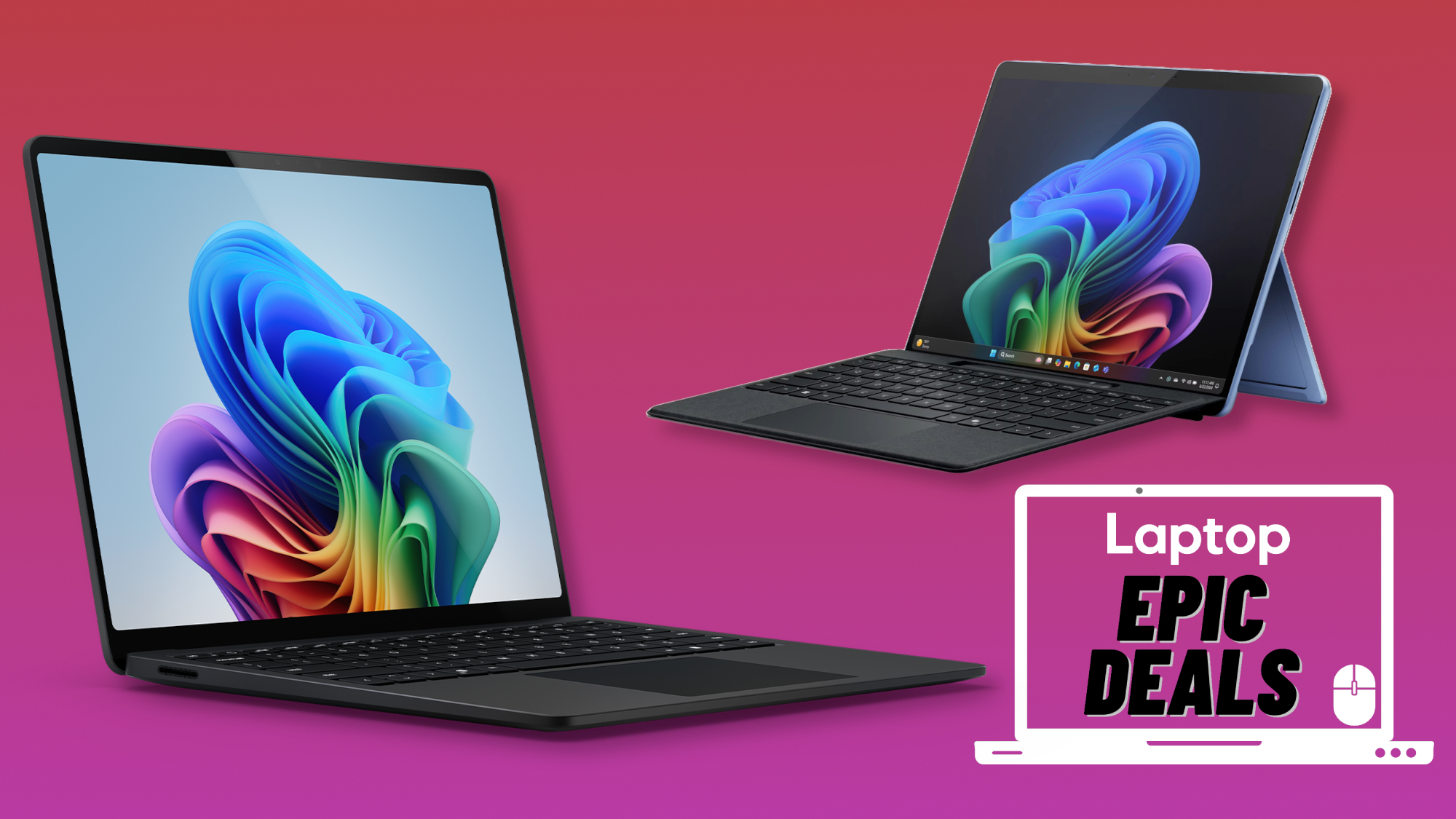
I'll let you in on a little secret: I'm a desktop PC person most of the time, but even I can't say no to some of the Microsoft Surface deals that are happening this April.
As an avid PC builder, I've only come to appreciate laptops when I figured out just how useful they really are. However, as I have a PC and a couple of consoles at home, all I really wanted was a lightweight, no-fuss laptop I could take on the go.
No one wants to carry around a ton of bricks on a daily basis, and let's be honest — some of these best gaming laptops really do weigh a ton (although they're pretty powerful as a result, too). But, I really like the Microsoft Surface lineup for how lightweight some of these notebooks are, all the while being pretty speedy.
Microsoft is pushing Copilot+ PCs hard, and if you want to hop on the AI hype train, I have to admit that the Surface is a great choice. Being a Microsoft product, it sets you up for success with the right specs and software to let you dig into what makes Copilot+ a good AI assistant.
Of course, the best place to start is the latest addition to the lineup, meaning the Microsoft Surface Laptop 7. There are two configurations on sale right now, and one is not for the faint of heart, but the savings are huge.
I'm talking about the Surface Laptop 7 that started at $2,099, but is now $1,569 at Amazon for a limited time. It's a huge $530 discount, which practically gets you a second budget laptop, or at the very least a pair of headphones to block out the noise on your daily commute. (Hey, have you seen our roundup of the best headphone deals? Spring is a shockingly good time to shop for new tech.)
Then, there's the other, much more budget-friendly side of the spectrum with the entry-level version of the Surface Laptop 7. It's much cheaper, but it's lightweight, and it still gets you Copilot+ if that's your jam. If not, it's simply a solid laptop for work.
Less laptop, more tablet? I've got you. There are a bunch of Microsoft Surface deals involving tablets; my favorite is the Surface Pro, now $899, down from $1,199.
Here are all the Microsoft Surface deals to check out in April 2025:
Best Microsoft Surface deals — Quick links
- Microsoft Surface Laptop 7 Copilot+ PC: was $999 now $799 @ Amazon
- Microsoft Surface Laptop 7 Copilot+ PC: was $2,099 now $1,569 @ Amazon
- Microsoft Surface Pro 11 (LED): was $1,199 now $929 @ Amazon
- Microsoft Surface Pro 11 (OLED) w/ Keyboard: was $1,824 now $1,639 @ Amazon
- Microsoft Surface Pro 11 (OLED): was $1,499 now $1,169 @ Amazon
Best Microsoft Surface deals
Save $200 on this entry-level version of the Surface Laptop 7. This base 2024 model doesn't have the bells and whistles of the higher-end specs, but it's still packing solid specs for the price, excellent build quality, and a comfortable and stylish design.
Features: 13.8-inch (2304 x 1536) PixelSense 120Hz touchscreen, Snapdragon X Plus 10-core CPU, Qualcomm Adreno GPU, 16GB RAM, 256GB SSD, Windows 11 Home with Copilot+
Save $530 on the Surface Laptop 7 at Amazon.
In our Surface Laptop 7 (13-inch) review, we gave it 3.5 out of 5 stars for its strong performance, long battery life, and bright display. Despite its so-so graphics, it's a solid productivity laptop. This innovative Copilot+ PC aims to transform the way you create and communicate.
Features: 15-inch (2496 x 1664) PixelSense 120Hz touchscreen, Snapdragon X Elite 12-core CPU, Qualcomm Adreno GPU, 32GB RAM, 1TB SSD, Windows 11 Home with Copilot+
If you're looking for something super portable and easy to carry around, this Microsoft Surface deal is for you. At just under 2.5 pounds, this might be one of the best laptops for students and professionals.
Features: 12.4-inch (1536 x 1024) PixelSense touchscreen display, 8GB LPDDR5 RAM, Intel Core i5-1235U CPU (up to 4.4GHz), 256GB SSD storage, Intel Iris Xe Graphics, fingerprint power button, Windows 11 Home, 15-hour battery life, Wi-Fi 6, Bluetooth, under 2.5 lbs.
On the tablet front, you can also save $300 on the entry-level Surface Pro tablet. It's got very similar specs to the laptop but without the built-in keyboard. It's basically a Windows iPad Pro.
In our Surface Pro (11th Edition) review, we loved almost everything but the price — an issue this deal fixes nicely.
Features: 13-inch (2880 x 1920) PixelSense 120Hz touchscreen, Snapdragon X Plus 10-core CPU, Qualcomm Adreno GPU, 16GB RAM, 512GB SSD, Windows 11 Home with Copilot+
If you're willing to spend more, you can get yourself the Surface Pro 11 with a keyboard and a gorgeous OLED touchscreen. This bundle features the Pro keyboard and the Slim Pen, and it's currently discounted by $185, making for some pretty huge savings.
Features: 13-inch (2880 x 1920) PixelSense 120Hz OLED touchscreen, Snapdragon X Plus 10-core CPU, Qualcomm Adreno GPU, 16GB RAM, 512GB SSD, Windows 11 Home with Copilot+
If you want a higher-spec Surface Pro, the upgraded OLED model is also on offer. You're paying more, but you get a beefier Elite CPU, more storage, and an upgrade to a beautiful OLED display.
Features: 13-inch (2880 x 1920) OLED 120Hz touchscreen, Snapdragon X Elite 12-core CPU, Qualcomm Adreno GPU, 16GB RAM, 1TB SSD, Windows 11 Home with Copilot+
Get The Snapshot, our free newsletter on the future of computing
Sign up to receive The Snapshot, a free special dispatch from Laptop Mag, in your inbox.

Ian is a UK-based technology, science, and entertainment writer. As a massive nerd, you’ll find him writing about everything from laptops and VR headsets to Star Wars, video games, and Lego.
- Hilda Scott
- Monica J. WhiteContributing Writer
You must confirm your public display name before commenting
Please logout and then login again, you will then be prompted to enter your display name.
